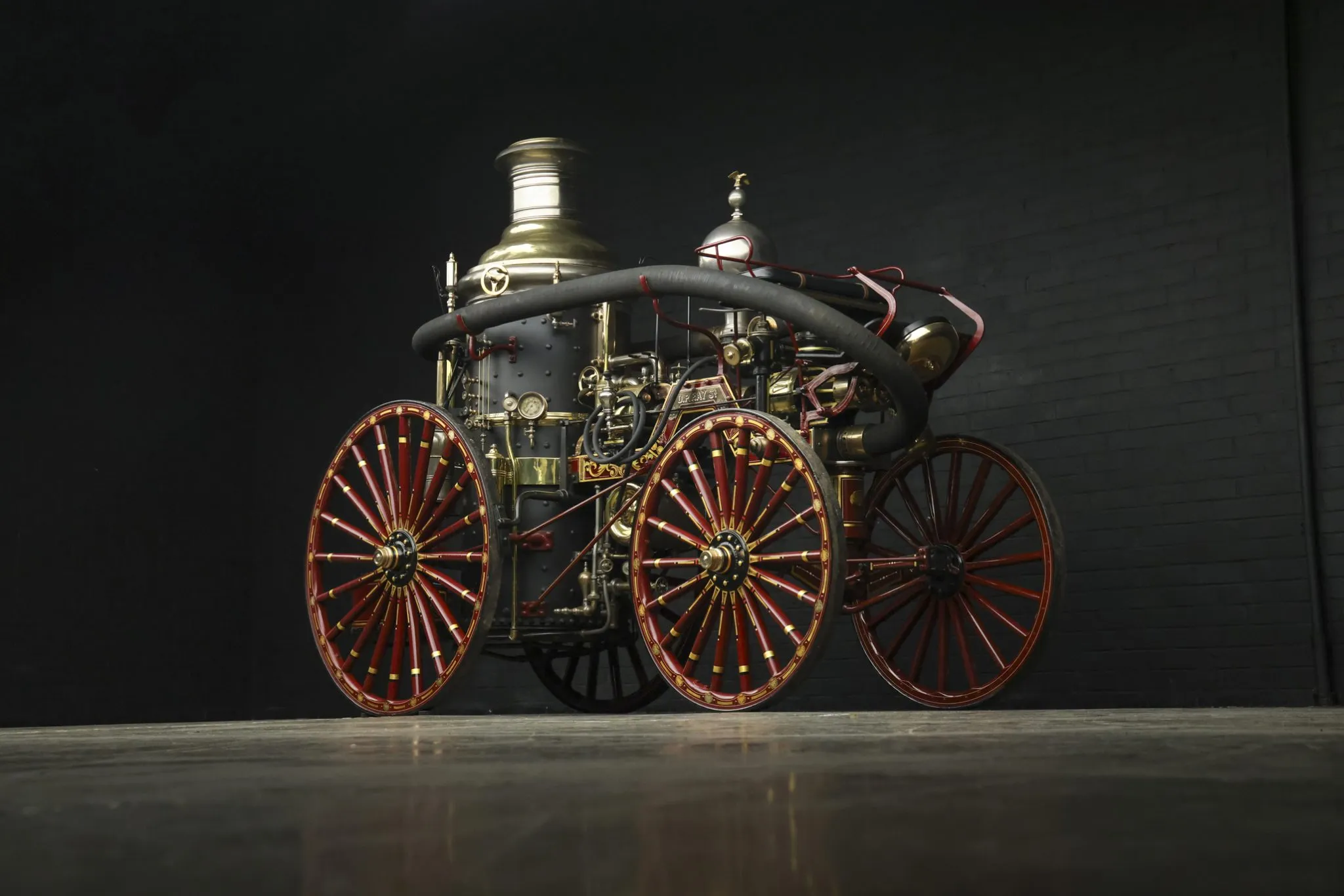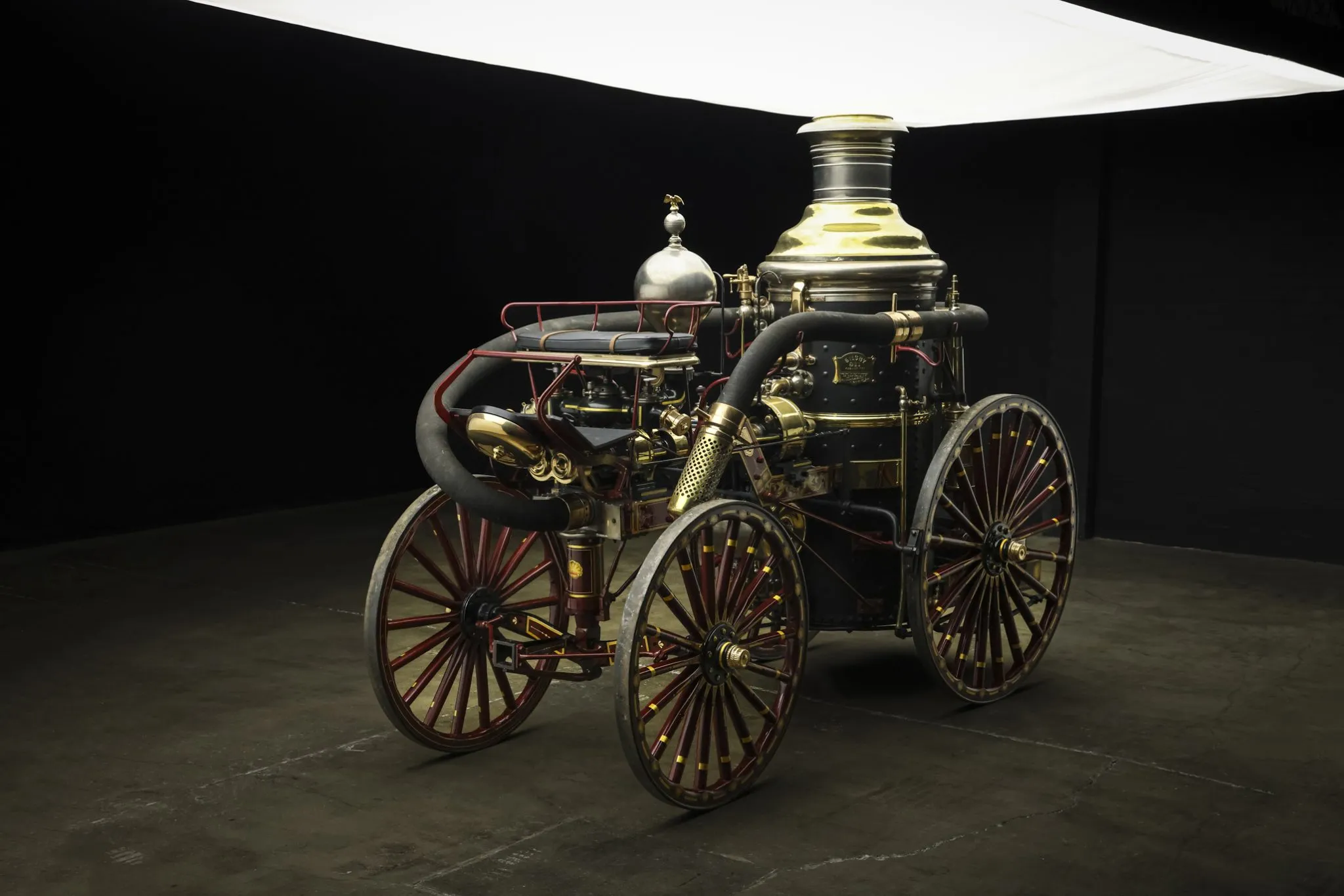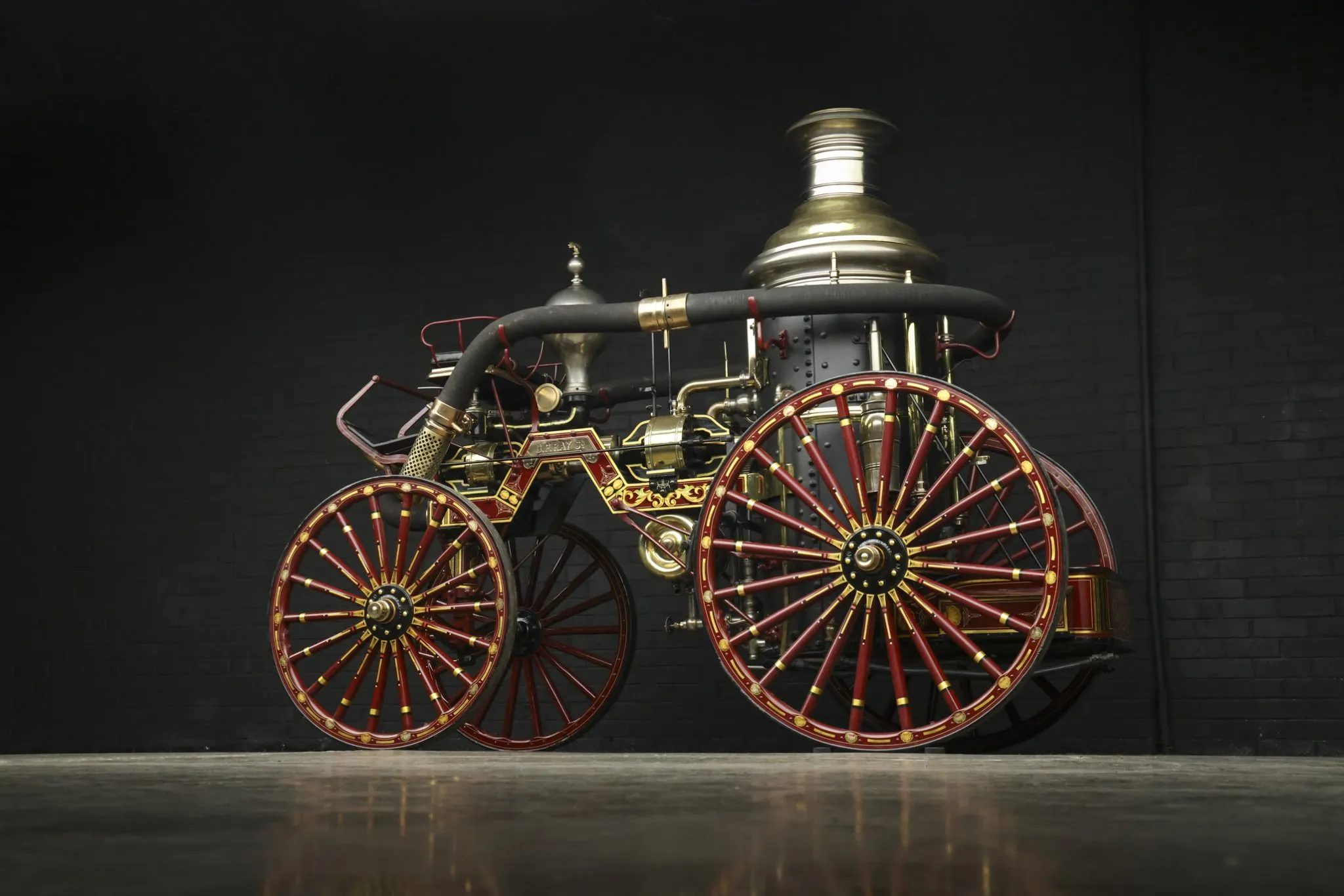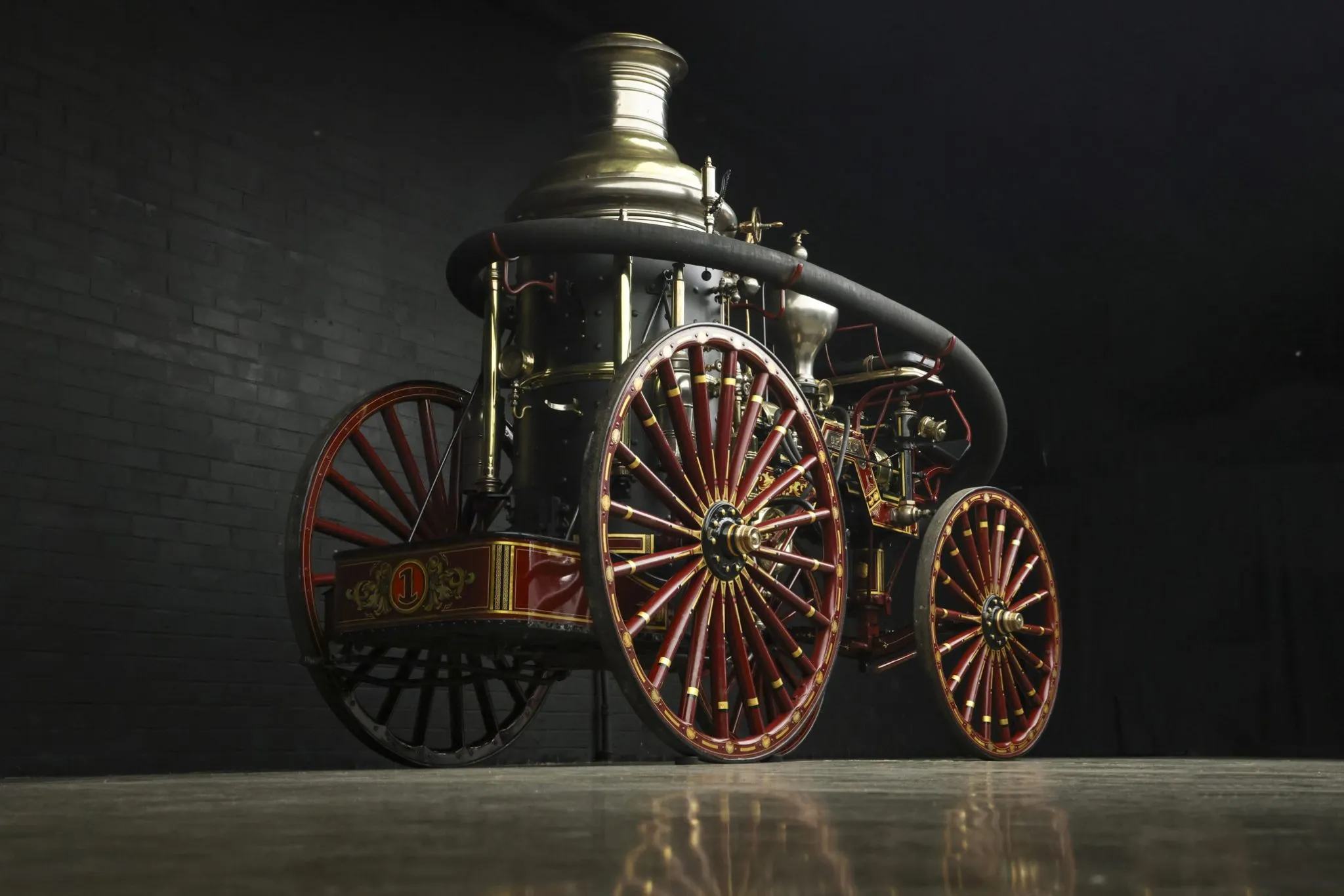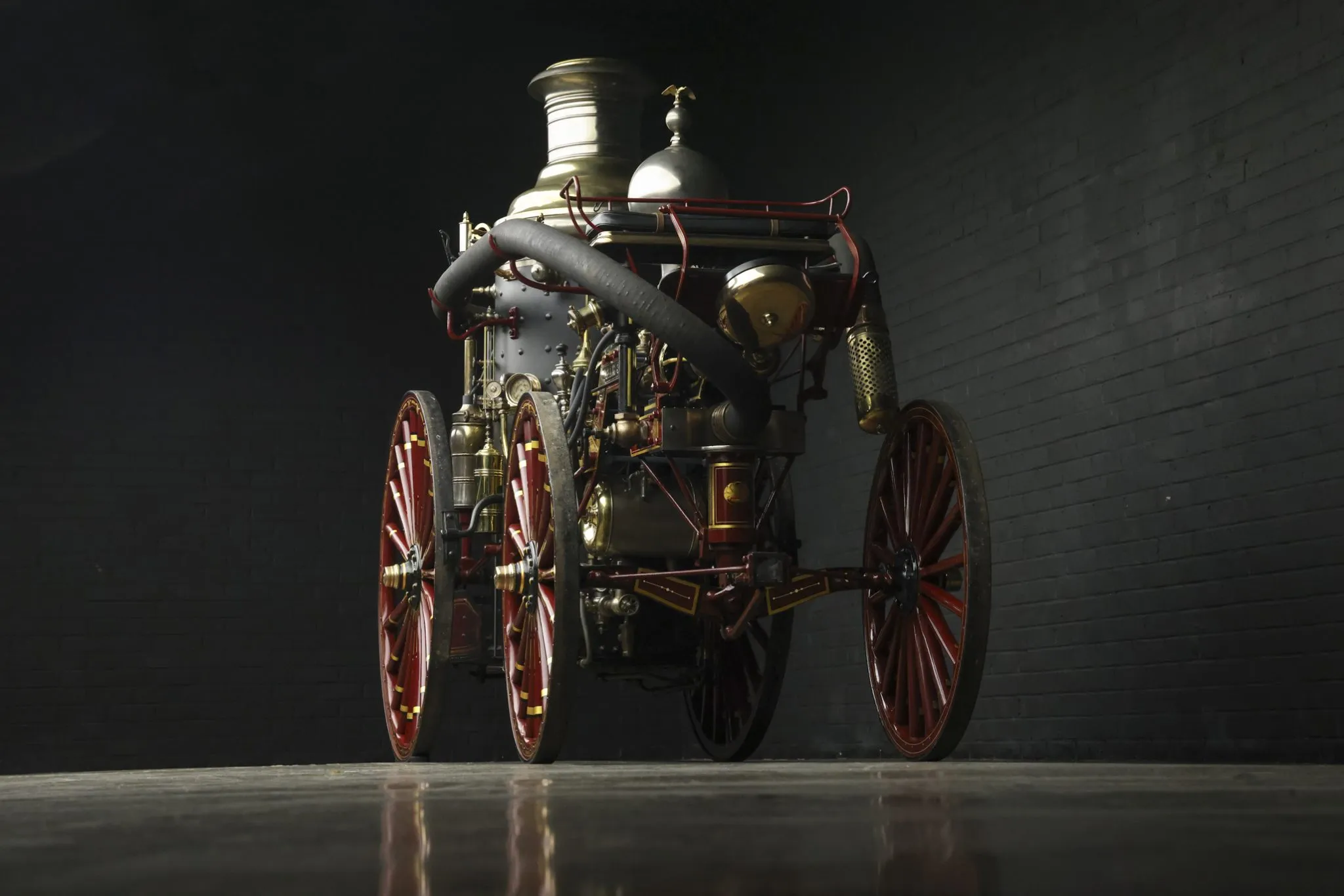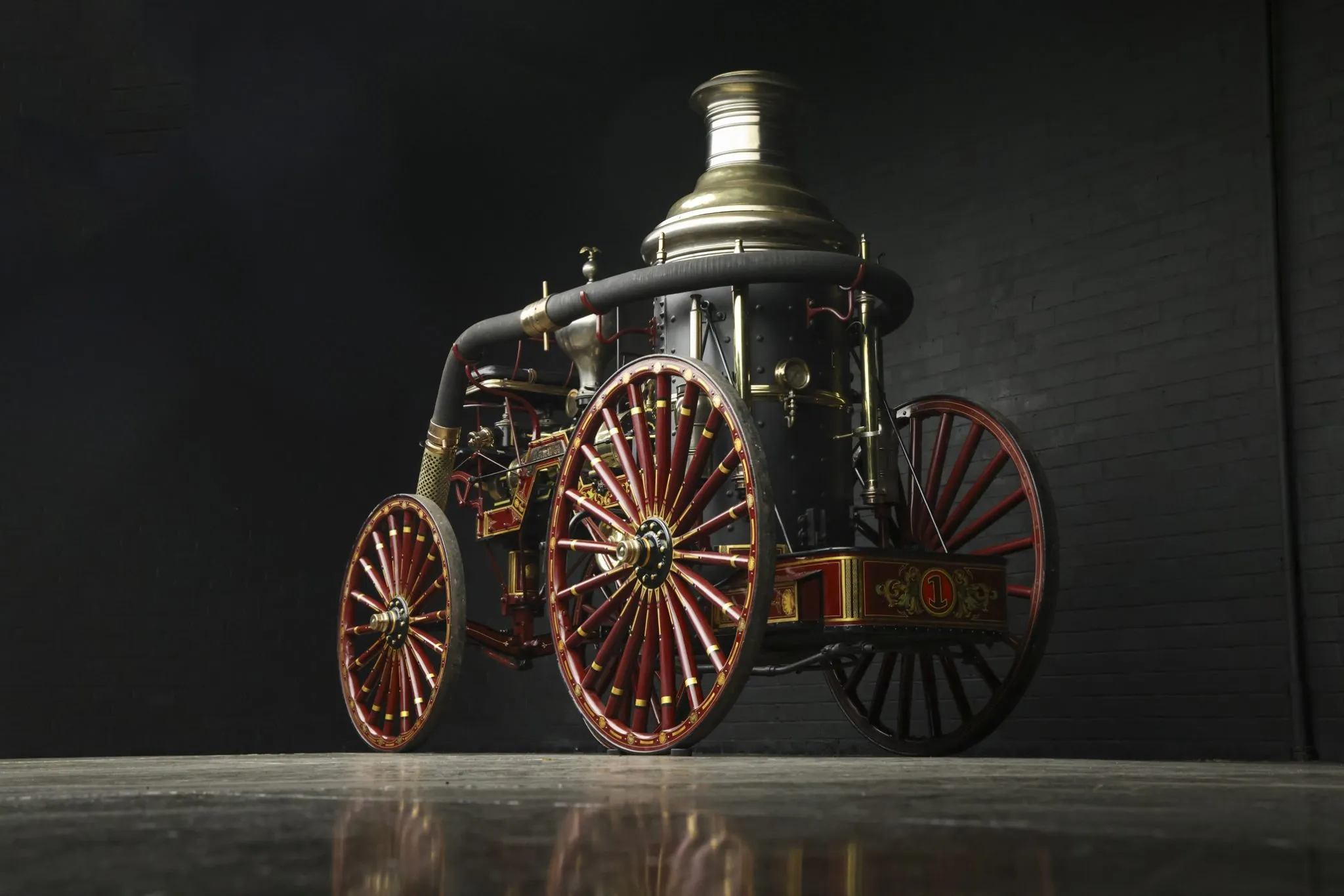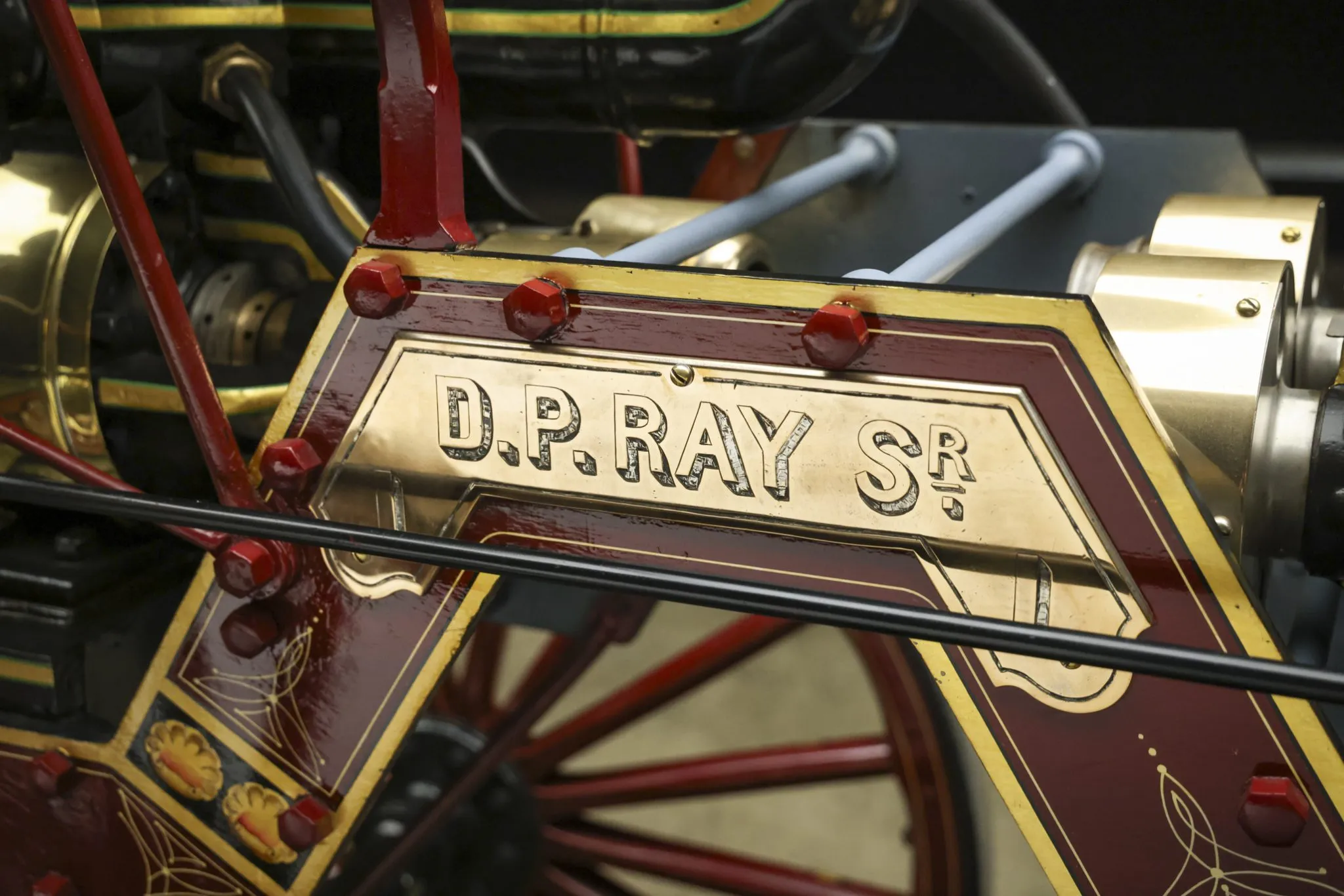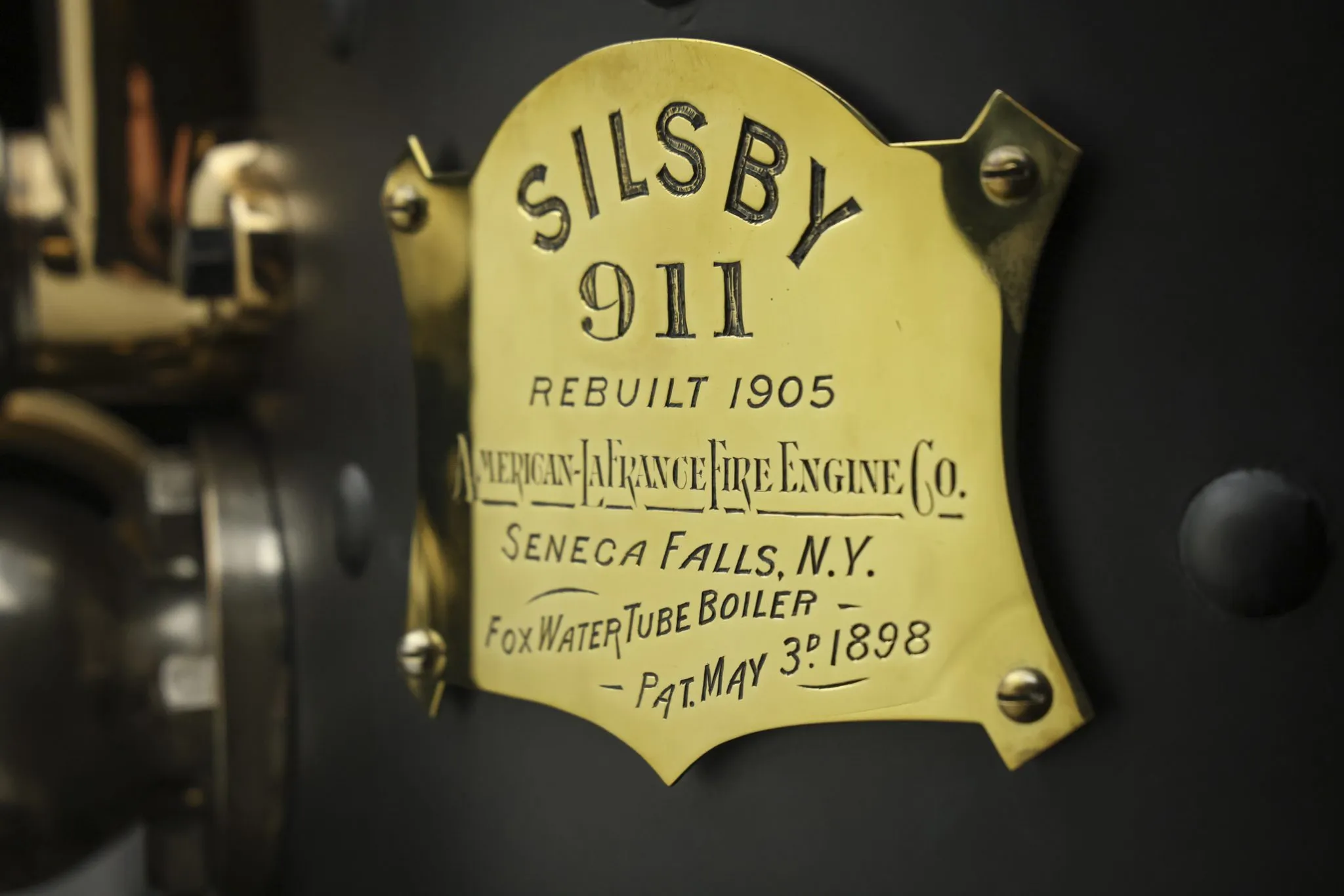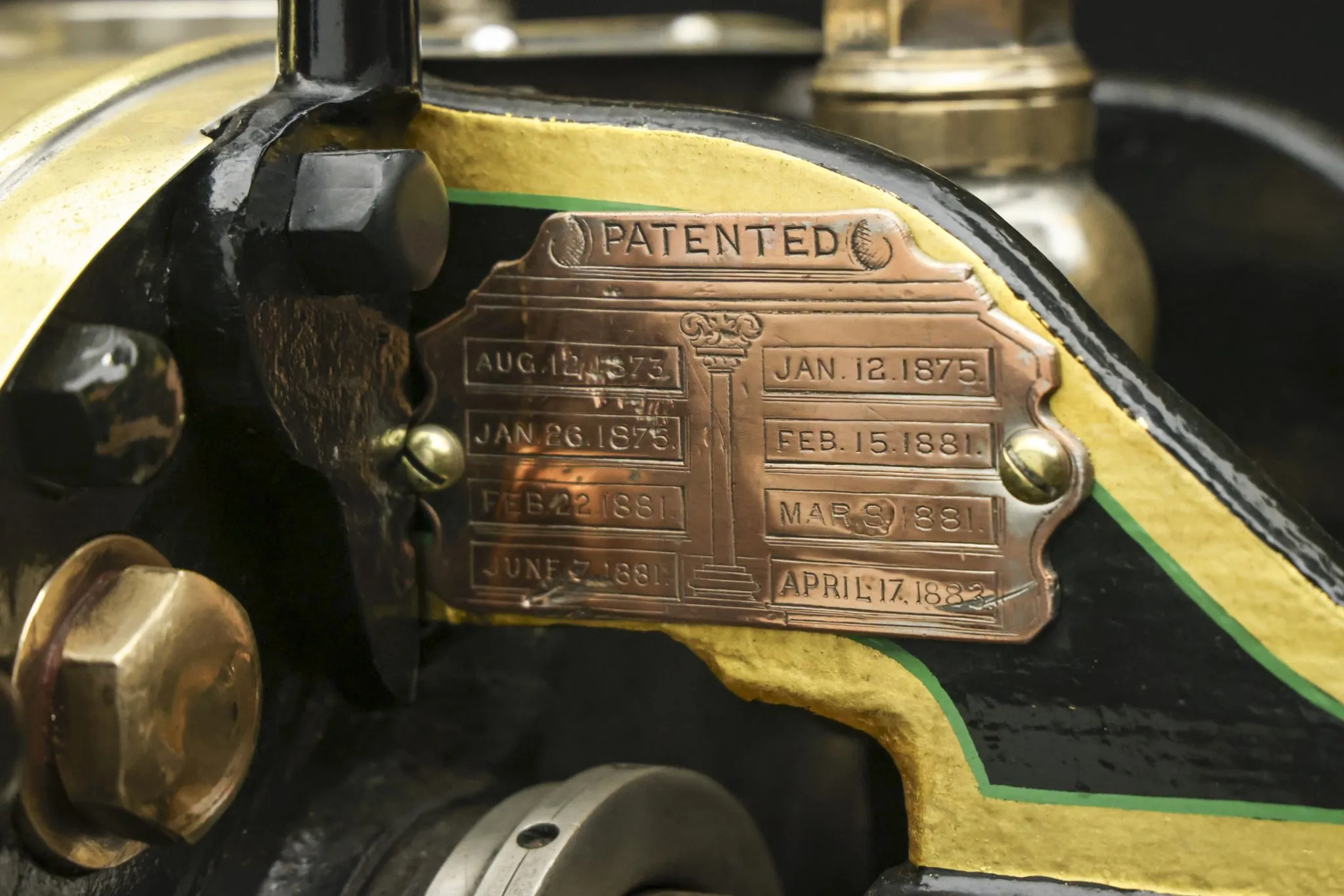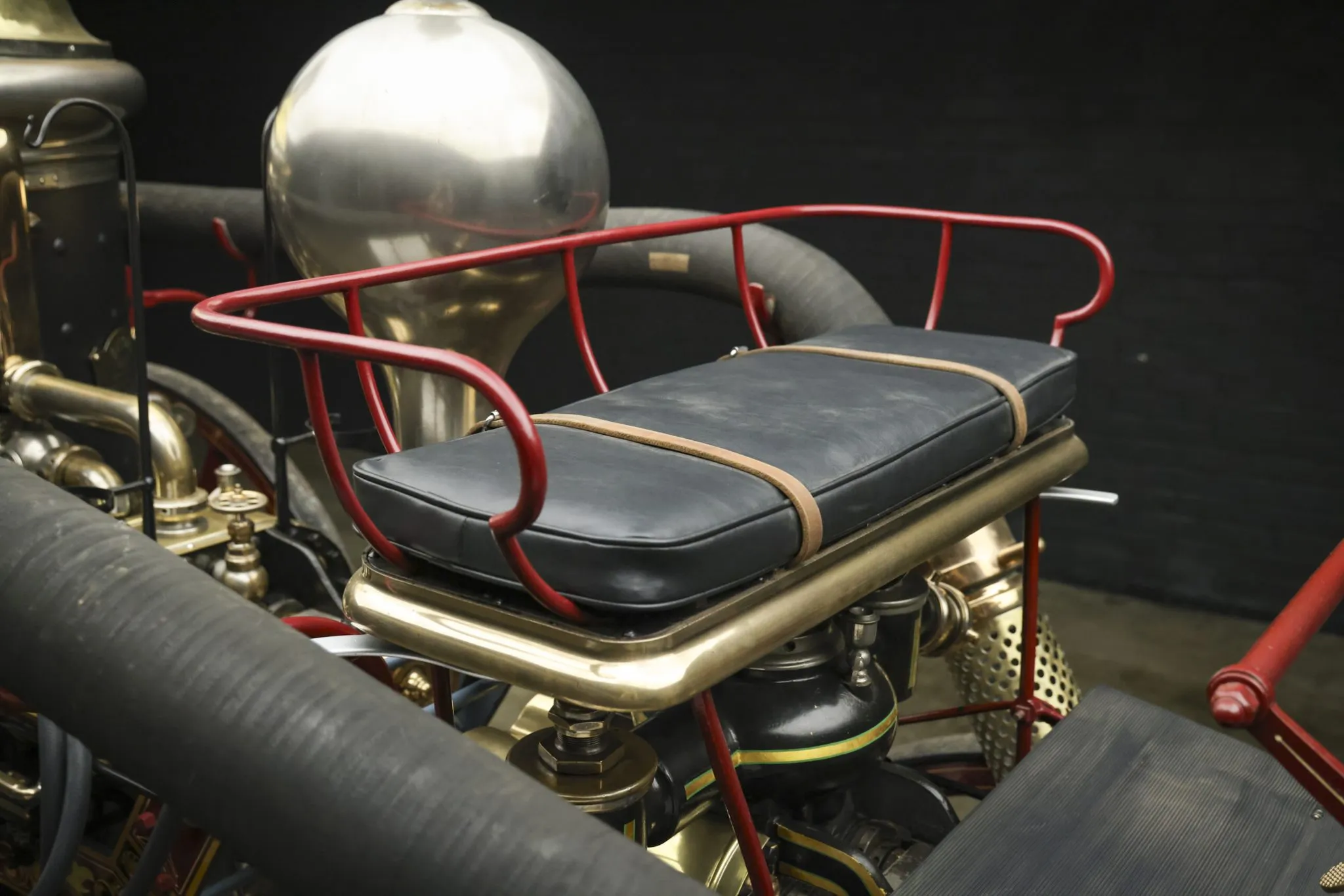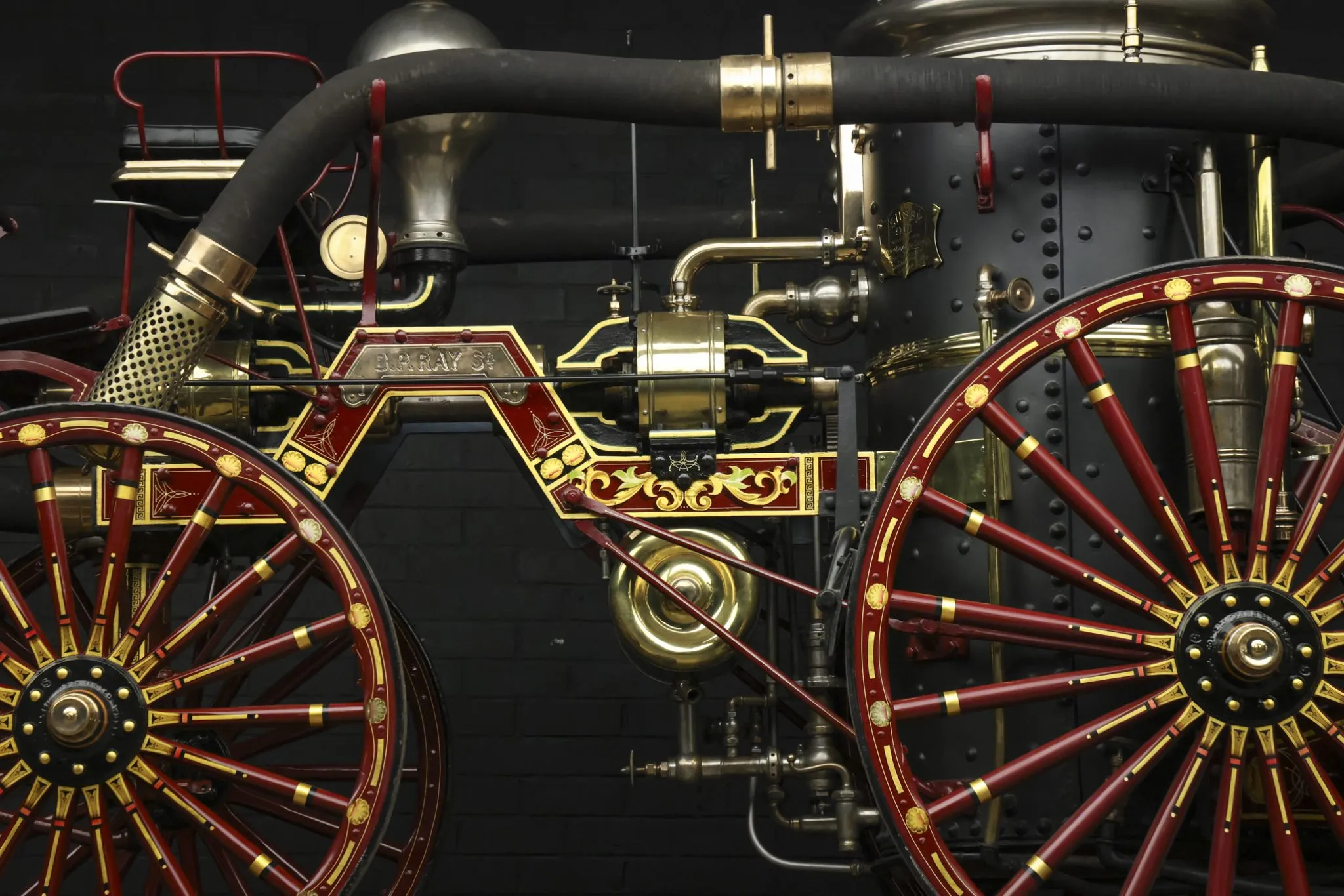This 1888 Silsby fire engine is a fourth-size equine-drawn steam pumper that was delivered new to Cicero, New York, in 1888 before being renovated by American LaFrance in 1905 for the Tyrone, Pennsylvania, fire company. Engine number 911 was purchased by its current owner five years ago before being refurbished by antique fire-fighting equipment specialist Firefly Restorations in Hope, Maine, between 2021 and 2024. Finished in red with gold-color ornamentations, the apparatus carries an American LaFrance Fox water-tube boiler designed to feed steam to a rotary-gear-powered pump that draws water from an external source via a suction hose to an attack hose. Additional features include a driver’s seat with a cushion upholstered in black, wood-spoke wheels with solid rubber tires, foot-actuated single-shoe rear brakes, a foot-stricken bell gong, dual discharge connections, a suction hose with a strainer, and two play pipes. This Silsby fire engine is now offered on dealer consignment in Newbury Park, California, with a bill of sale.
Silsby was founded in Seneca Falls in 1845 as a manufacturer of farm implements before committing to the production of fire apparatus and becoming one of the first companies to offer a steam engine in 1856. With a distinct rotary-pump design, Silsby produced over 1,000 horse- or hand-drawn engines in a range of sizes through the 1880s. The company joined other engine and equipment firms to form the American Fire Engine Company in 1891, and in 1900 merged with the LaFrance Fire Engine Company to form an entity that soon after became the American LaFrance Fire Engine Company.
Designed to be pulled by a pair of specially trained horses, this steam pumper is an example of Silsby’s ninth and final design and features a crane-neck frame that allows clearance for the front wheels to maneuver the wagon into a 180° turn. The fourth-size designation indicates a pumping capability of approximately 450 to 600 gallons of water per minute. The wagon is finished in red with gold-color motifs over the frame rails.
Red-painted wooden artillery wheels feature gold-color accents and wear solid rubber tires. The rear wheels are equipped with single brake blocks that contract against the tire surface with actuation via a foot bar and a series of levers and rods.
The Fox sectional water-tube boiler feeds steam through a cylinder that incorporates two rotary cams, each with two long teeth that mesh with recesses in the opposite cam to pass steam upward into the stack. One of the cylinder shafts in turn drives one of two similarly arranged three-toothed pump cams that draw water through an intake connection and expel it out of a smaller discharge outlet. An intake port is located at the front of the wagon, while discharge connections are present on each side. The selling dealer states the boiler has not been tested following the refurbishment.
The driver’s seat features a cushion trimmed in black upholstery and held in place by leather straps, and foot controls include a push button for a bell gong mounted ahead of the floorboard and a push-bar that actuates the brakes. Additional features include a rear-mounted firebox tray carrying a storage box at its side, a bulb-shaped air chamber topped by an eagle mascot, a sight glass, a steam whistle, a lubrication can, and gauges monitoring steam and water pressure. A suction hose with a strainer is affixed to the intake connection, while hose ends and play pipes with nozzles are mounted at the rear of the boiler.
The Silsby badge is marked with number 911 and notes a rebuild in 1905 by the factory after its absorption into the American La France Fire Engine Company.

